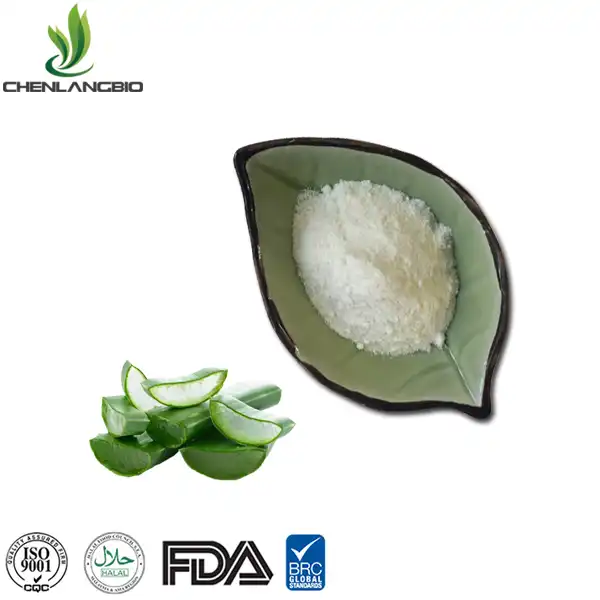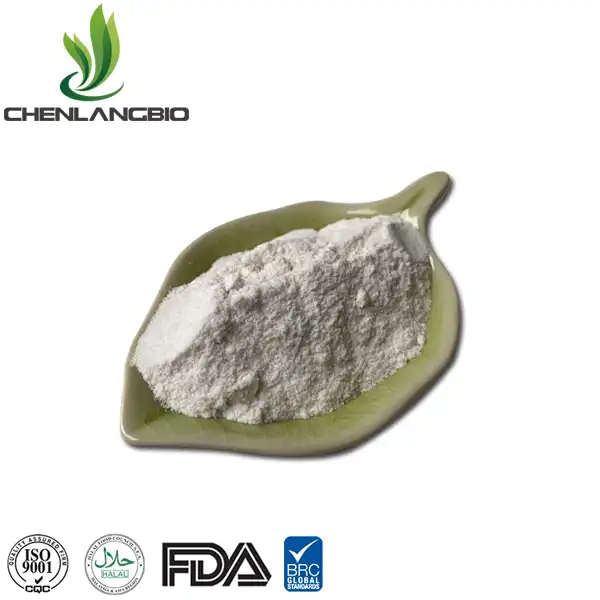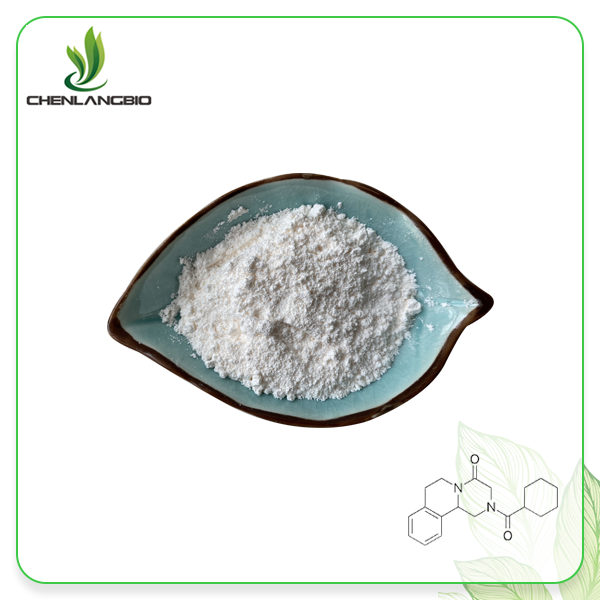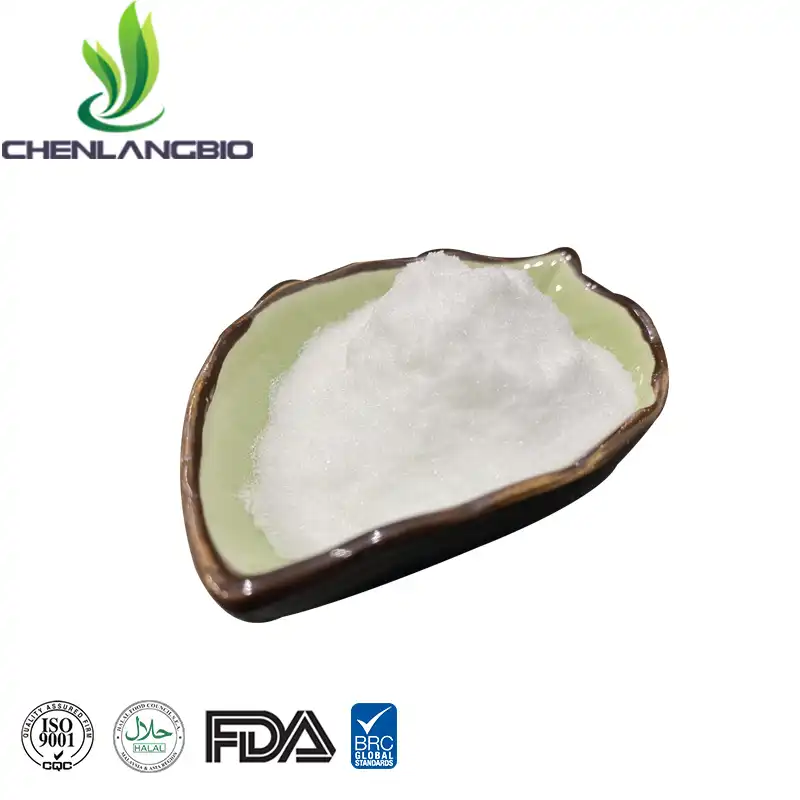What Is The Use of Lysozyme
2024-06-25 15:30:17
Lysozyme is an enzyme that plays a crucial role in breaking down the cell walls of bacteria, making it an important tool in various scientific and industrial applications. This enzyme, found abundantly in egg whites, tears, and other secretions, is utilized for its antimicrobial properties. Lysozyme powder, in particular, is a versatile form used across multiple fields for its effectiveness and convenience.
How Does Lysozyme Powder Work
Lysozyme functions by catalyzing the hydrolysis of 1,4-beta-linkages between N-acetylmuramic acid and N-acetyl-D-glucosamine residues in the bacterial cell wall peptidoglycan. This action weakens the bacterial cell wall, leading to cell lysis and death, making it highly effective against Gram-positive bacteria. While it is less effective against Gram-negative bacteria due to their outer membrane, lysozyme can still be employed in conjunction with other agents to increase its efficacy.
Mechanism of Action
The enzyme's activity centers on breaking the glycosidic bond in the peptidoglycan layer of bacterial cell walls. This enzymatic action disrupts the integrity of the bacterial cell wall, causing the cell to burst due to osmotic pressure differences. The specificity of lysozyme towards certain bacterial components makes it a potent antimicrobial agent, particularly against Gram-positive bacteria like Staphylococcus and Streptococcus species.
Application in Gram-Negative Bacteria
To enhance its efficacy against Gram-negative bacteria, lysozyme is often used in combination with EDTA (ethylenediaminetetraacetic acid), which helps to permeabilize the outer membrane, allowing lysozyme to access the peptidoglycan layer. This combination extends the range of lysozyme's antibacterial activity, making it a more versatile tool in microbial control.
What are the Industrial Applications of Lysozyme Powder?
Food Preservation
Lysozyme is widely used in the food industry as a natural preservative. It helps extend the shelf life of perishable foods by inhibiting the growth of spoilage-causing bacteria. For instance, it is added to cheese to prevent the growth of Clostridium tyrobutyricum, which causes spoilage and gas formation during cheese ripening. Its use in food products is favored for being a natural and safe alternative to chemical preservatives.
Dairy Products
In the dairy industry, lysozyme is particularly valued for its ability to prevent late blowing in cheese, a defect caused by gas-producing bacteria. By adding lysozyme to the cheese-making process, manufacturers can ensure a more consistent product quality and longer shelf life, reducing waste and increasing consumer satisfaction.
Meat and Poultry
In meat and poultry products, lysozyme is used to control spoilage and pathogenic bacteria. Its application in these products helps maintain freshness and safety, providing an additional layer of protection against foodborne illnesses. The enzyme's natural origin and safety profile make it an appealing choice for manufacturers looking to avoid synthetic preservatives.
Biotechnology and Research
In biotechnology, lysozyme is employed to lyse bacterial cells to extract proteins, nucleic acids, and other cellular components. This application is crucial in various molecular biology techniques, including plasmid DNA isolation and protein purification. The enzyme's ability to break down bacterial cell walls without damaging other cellular structures makes it ideal for these purposes. Additionally, lysozyme's role in protein crystallization studies helps scientists understand protein structures and functions better.
Cell Lysis
The use of lysozyme in cell lysis is a standard technique in laboratories. It is essential for the preparation of samples for downstream applications such as PCR, Western blotting, and enzyme assays. Lysozyme's gentle action ensures that the intracellular components are preserved in their native states, which is critical for accurate experimental results.
Pharmaceutical Applications
Lysozyme's antibacterial properties make it valuable in pharmaceuticals, especially in formulations aimed at treating infections. It is used in nasal sprays, throat lozenges, and eye drops to combat bacterial infections and reduce inflammation. Its inclusion in these products leverages its natural origin and safety profile, providing an effective means to manage bacterial infections without the side effects associated with synthetic antibiotics.
Nasal Sprays and Eye Drops
In nasal sprays, lysozyme helps to reduce bacterial load and inflammation in the nasal passages, providing relief from symptoms of sinusitis and rhinitis. In eye drops, it is used to treat bacterial conjunctivitis and other eye infections, offering a gentle and effective alternative to traditional antibiotics.
Oral Health Products
Lysozyme is also included in oral health products such as toothpaste and mouthwash. Its antimicrobial properties help to control the growth of harmful bacteria in the mouth, reducing the risk of cavities, gum disease, and bad breath. This application highlights the enzyme's versatility and its potential to improve overall health and hygiene.
What are the Benefits and Limitations of Using Lysozyme Powder
Benefits
Natural and Safe: As a naturally occurring enzyme, lysozyme is generally recognized as safe (GRAS) for use in food and pharmaceutical products.
Broad-Spectrum Antibacterial Activity: It is effective against a wide range of Gram-positive bacteria and can be combined with other agents to target Gram-negative bacteria.
Versatility: Lysozyme's applications range from food preservation to pharmaceuticals, highlighting its versatility.
Stability: Lysozyme powder is stable and can be easily stored and transported, making it convenient for industrial use.
Limitations
Limited Efficacy Against Gram-Negative Bacteria: The outer membrane of Gram-negative bacteria protects them from lysozyme, necessitating the use of additional agents for effective control.
Potential Allergens: As a protein derived from egg whites, lysozyme can be an allergen for some individuals, limiting its use in products for sensitive populations.
Cost: While effective, lysozyme can be relatively expensive compared to synthetic alternatives, potentially limiting its widespread use in cost-sensitive applications.
Regulatory Challenges: The use of lysozyme in food and pharmaceuticals is subject to regulatory approvals, which can vary by region and impact its adoption in certain markets.
Conclusion
Lysozyme powder is a powerful and versatile enzyme used across various industries for its antimicrobial properties. From preserving food and aiding in molecular biology research to treating infections in pharmaceuticals, its applications are vast and impactful. However, considerations regarding its limitations and potential allergenicity are important when integrating lysozyme into products. For more information on lysozyme products, please contact us at admin@chenlangbio.com.
References
Thermo Fisher Scientific. Lysozyme Overview. Retrieved from Thermo Fisher.
Laboratory Notes. Preparation of Lysozyme Stock Solution. Retrieved from Laboratory Notes.
Bioseutica. Lysozyme Hydrochloride. Retrieved from Bioseutica.
DrugBank. Lysozyme Uses and Interactions. Retrieved from DrugBank Online.
Cambridge Core. Egg-white Lysozyme as a Food Preservative. Retrieved from Cambridge Core.
European Food Research and Technology. Lysozyme Separation from Chicken Egg White. Retrieved from Springer Link.
Fisher Scientific. Lysozyme, Egg White. Retrieved from Fisher Scientific.
Sigma-Aldrich. Lysozyme Lyophilized Powder. Retrieved from Sigma-Aldrich.
World's Poultry Science Journal. Mechanism of Lysozyme Action. Retrieved from Cambridge Core.
ScienceDirect. Use of Hen Egg White Lysozyme in the Food Industry. Retrieved from ScienceDirect.
Send Inquiry
Related Industry Knowledge
- How Should Dihydroavenanthramides Be Used For Skincare
- Benefits of Saccharomyces Ferment Lysate Filtrate
- How Long Does Sildenafil Powder Last? Effects and Duration
- How Should Dimethylmethoxy Chromanyl Palmitate Be Applied
- What Foods Contain Mangiferin
- Is Honokiol Safe to Use
- When to Use Natural Kojic Acid Powder
- How Much Turkesterone in Ajuga Turkestanica Extract Powder
- Regulate Immunity Pure Natural Quercetin
- What Is The Ingredient Isoleucine









